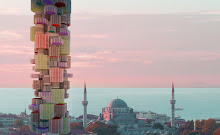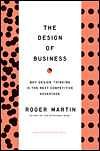When I lived in New York City, I used to resent the huge crowds of tourists and hawkers that would line the perimeter of Ground Zero - the huge gaping hole that once supported the twin towers of the World Trade Center. It felt too much like a circus to me, (all those cameras flashing), and disrespectful to those who suffered through the tragedy of 9/11. I read a statistic recently that before 9/11, 1.8 million tourists per year on average visited the observation deck at the World Trade Center. However, post 9/11 in 2002, 3.6 million visitors came to Ground Zero to see the ashes of the twin towers.
Obviously tragedy seems to be a huge tourism driver.
I didn't give much thought to that until recently, when I was on the other side as a tourist. This time, I was in New Orleans for a conference. It was my second trip to the Crescent City. The first was in 2003. Back then, I roamed the French Quarter, the Garden District, and went on the Bayou and Plantation Tours. However, upon returning to New Orleans, post Hurricane Katrina, having read about the devastation and the slow pace of reconstruction albeit five years later, I admit I was curious. Ultimately, I don't know what drove me to book the "Hurricane Katrina tour" with Greyline. Perhaps I wanted to see the New Orleans outside the traditional tourist destinations. I wanted to know what exactly happened the day Hurricane Katrina hit, why New Orleans nearly drowned, I wanted to know about the devastation and reconstruction efforts - and I wanted a more accurate picture. Or perhaps my curiosity got the better of me and my inner rubbernecker took over. Whatever the reason, from the moment I booked the tour, I was conflicted. Was I exploiting people's suffering for my own curiosity and entertainment?
Ultimately, I was glad that I signed up for the tour primarily because I learned a lot and have a much better understanding of not only what happened the days and weeks after Hurricane Katrina hit but of all the successes and struggles in rebuilding since then. New Orleans was always one of my favorite North American cities for the culture and the diversity, but after this tour I felt I had a new respect and awe for the city and its residents. I would have preferred however, if instead of two giant buses, my tour was in a small minivan. I would have felt that at least we were less intrusive. I would have also preferred that Greyline donate a portion of their profits from the tour to the neighborhoods hardest hit.
Since returning home, my inner conflict about the Hurricane Katrina tour has stayed with me. It has made me think about the rise of tours around the world for tourists in search of a more "authentic experience" to places like the Dharavi Slums in Mumbai, the Soweto Township in South Africa or the tours to the Rocinha Favela in Rio de Janeiro, the largest slum in South America. There is even a term for this type of tourism - "Poverty Tourism" or Poorism. Perhaps the rise in these tours are the result of a greater awareness of the world's problems, or perhaps it is a result of movies like City of God or Slumdog Millionaire that romanticize these slums, the violence and the poverty. Despite all my own inner conflicts about these tours, the objectification of the people, the power discrepancy - many of the residents in these neighborhoods do not have a choice in becoming a tourist attraction, I can't say I wouldn't go on any of these tours.
Obviously there is a very fine line between education, curiosity and exploitation; and where the line is drawn is nebulous and vague, never altogether clear. I am sure some of the visitors to Ground Zero are there simply to pay their respects to the fallen. There are some neighborhoods in New Orleans that welcome the tours, with the hope that increased awareness will bring more assistance in the reconstruction process. Some tours through the slums of Mumbai are run by the residents of the slums, which not only increases the sensitivity of the tour but also promotes entrepreneurship and investment within the slums. While Hermano Vianna, the author of several books on the relationship between favelas and Brazilian music tells the Christian Science Monitor that "People come here [Rocinha] to get away from the boredom of their own countries. They are looking for cultural authenticity. This is like Disneyland to them;" other residents of the favelas feel there is a rich culture to be shared that goes beyond the violence and the lack of basic amenities.
**For more information and other thoughts on how to increase sensitivity when partaking in these tours, check out:
"A Dose of Reality" by Anya Yurchyshyn on Budget Travel


































Your post is very nice.
ReplyDeleteInformation is very important.
Images are speak your feelings.
Gambia Tourist Attractions
Dharavi (Portuguese spelling Daravi British Anglicised spelling Darravy, Dorrovy) is a slum and administrative ward, over parts of Sion, Bandra, Kurla and Kalina suburbs of Mumbai, India. It is sandwiched between Mahim in the west and Sion in the east, and spread over an area of 175 hectares, or 0.67 square miles. In 1986, the population was estimated at 530,225, but modern Dharavi has a population of between 600,000 and over 1 million people, Dharavi is one of the largest slums in Asia,
In expensive Mumbai, Dharavi provides a cheap, but illegal, alternative where rents were as low as 4 US dollars per month in 2006. Dharavi exports goods around the world. The total turnover is estimated to be between 500 million US dollars and over 650 million US dollars per year.